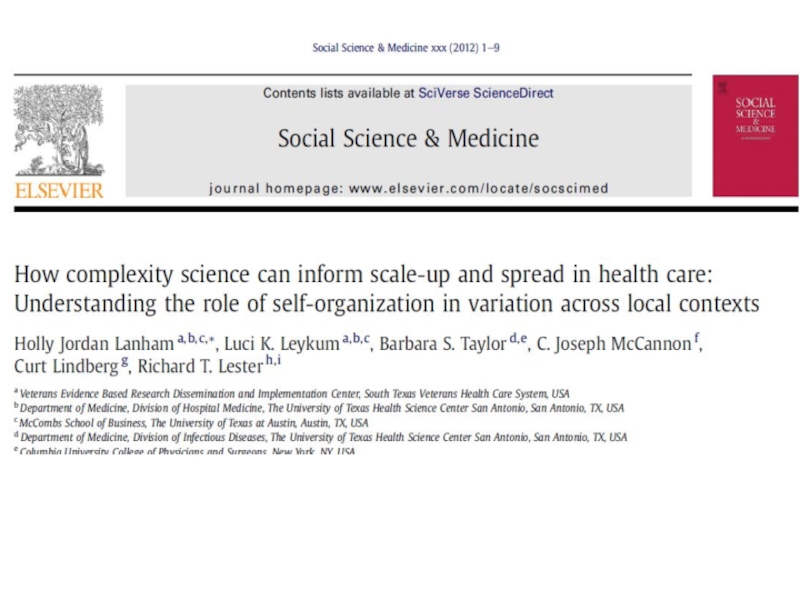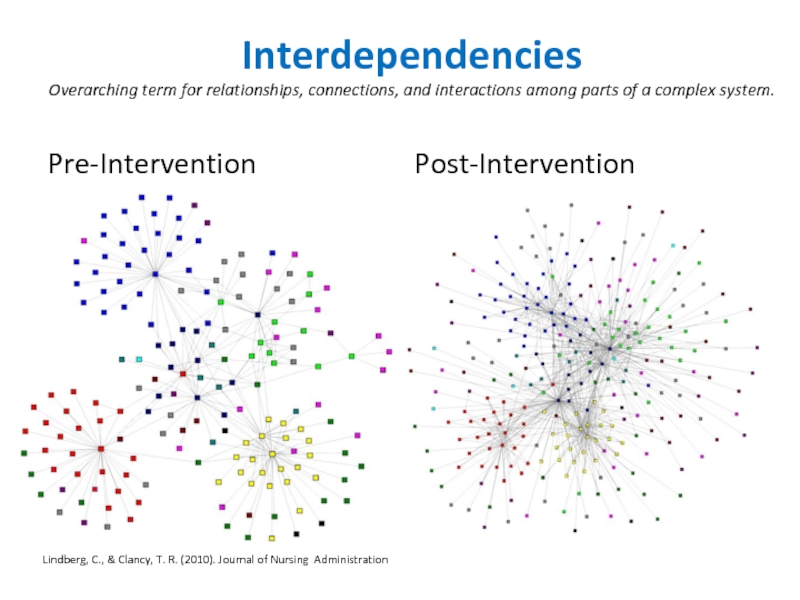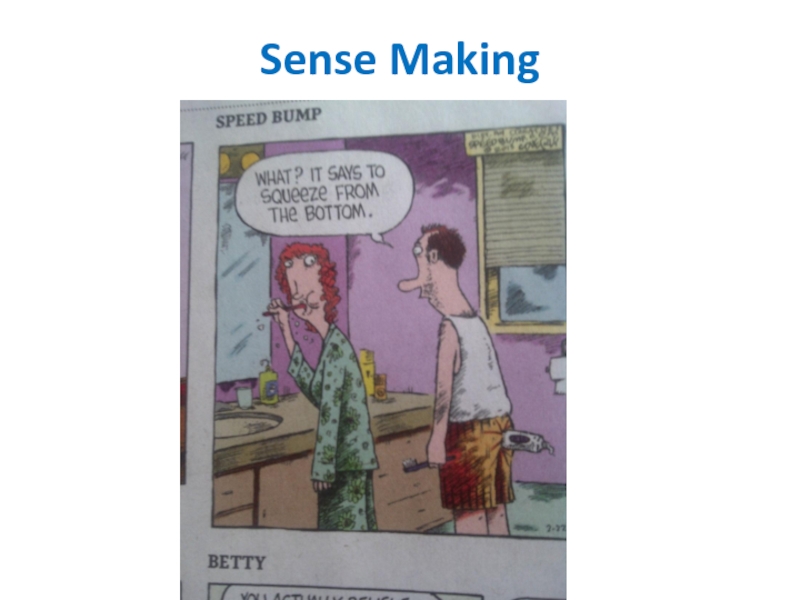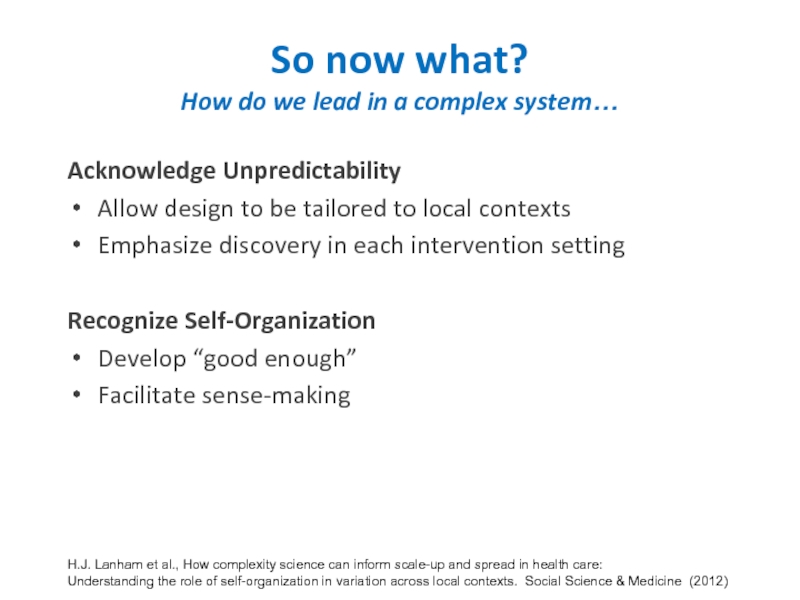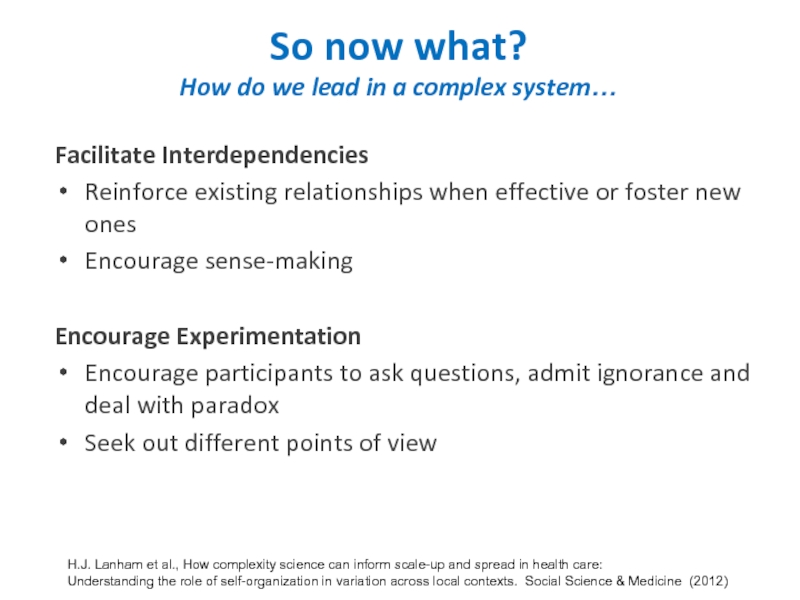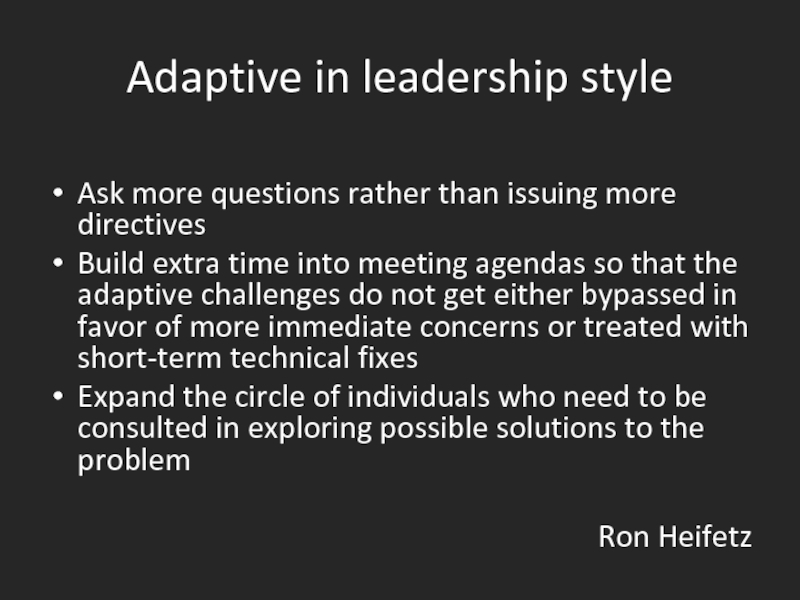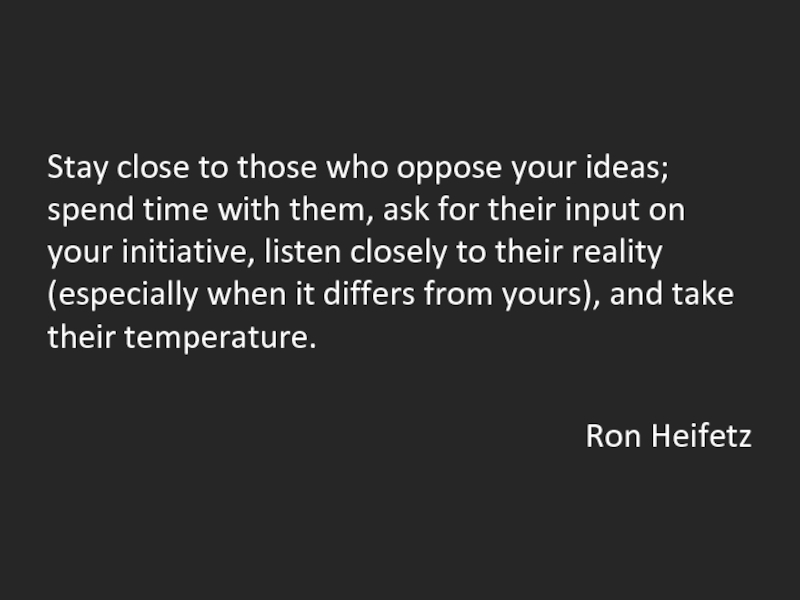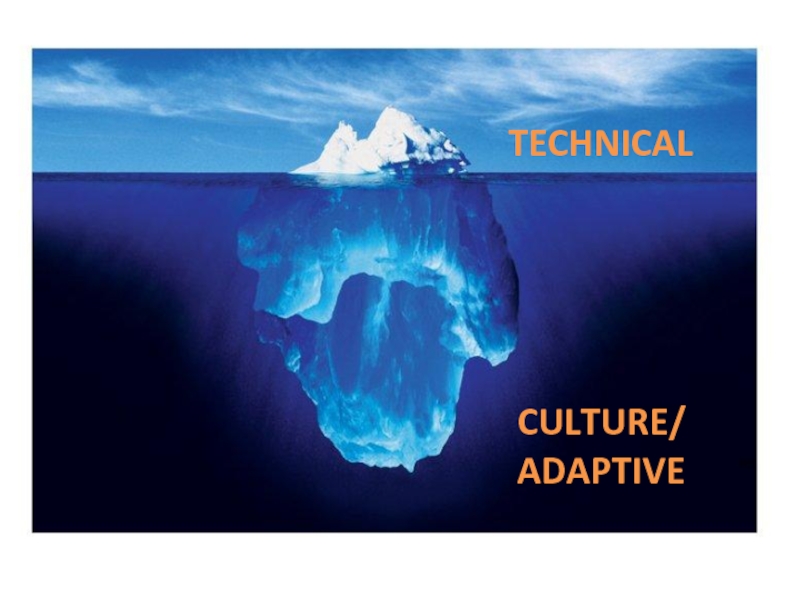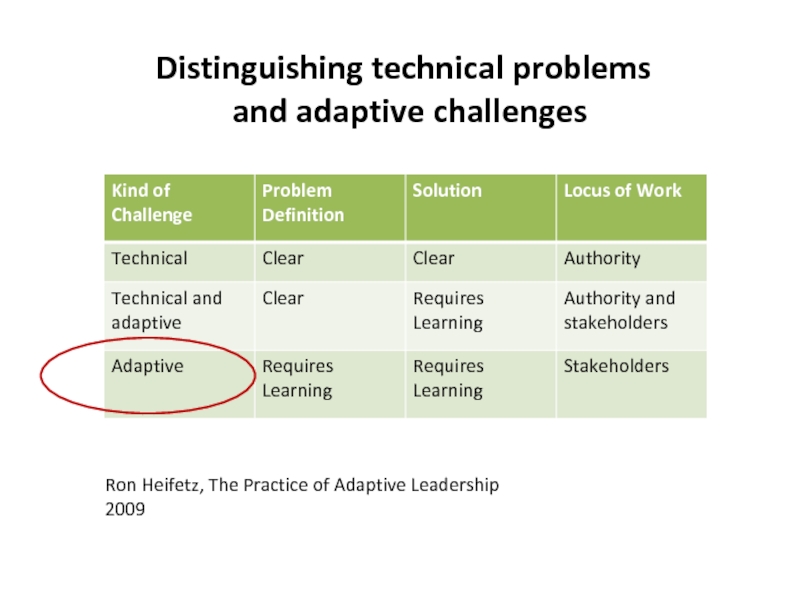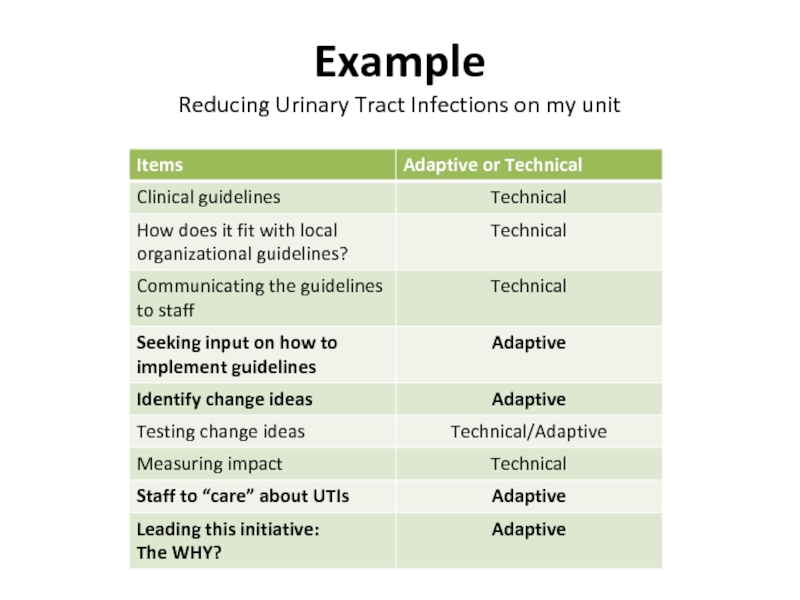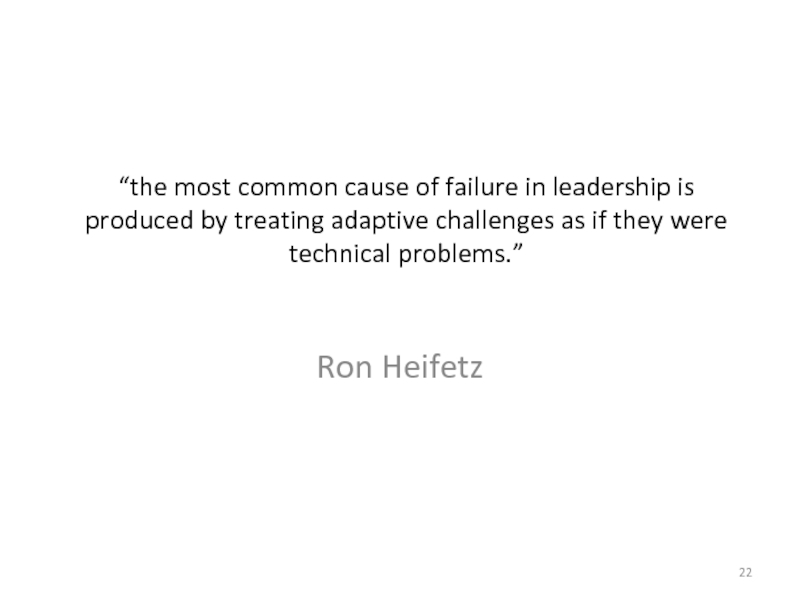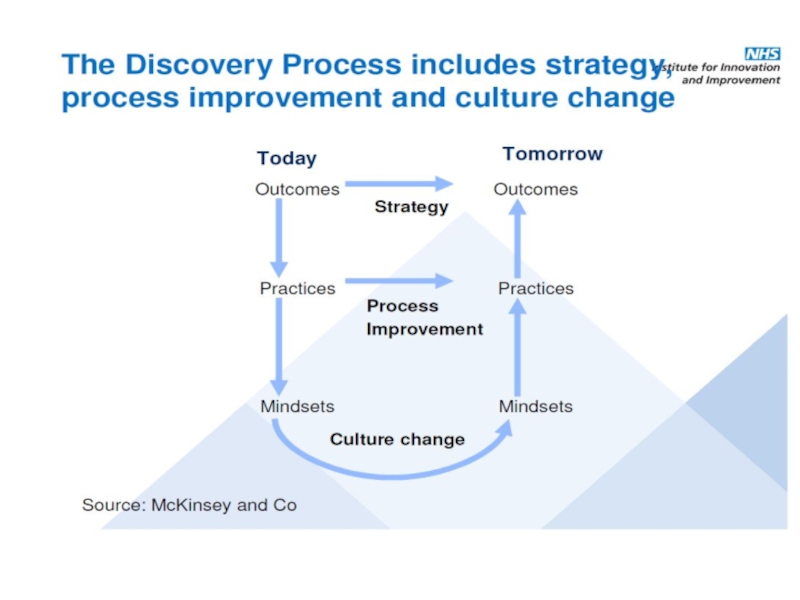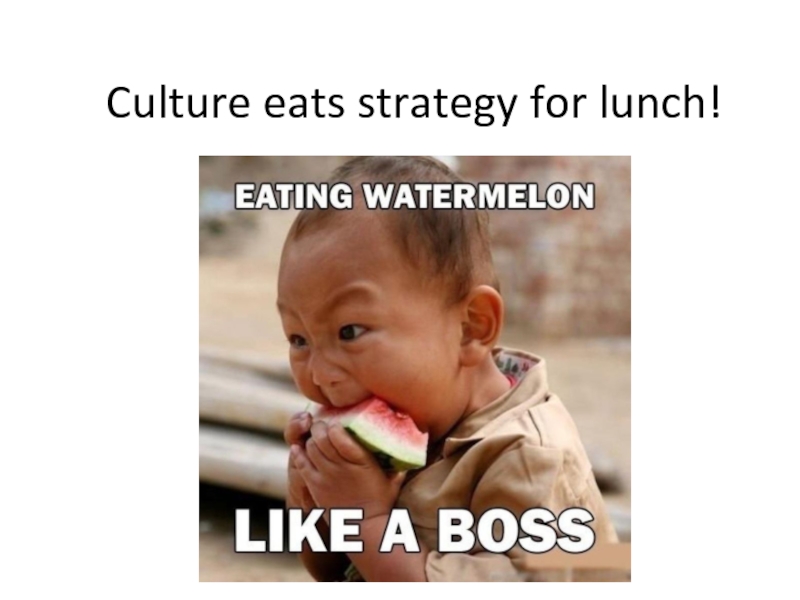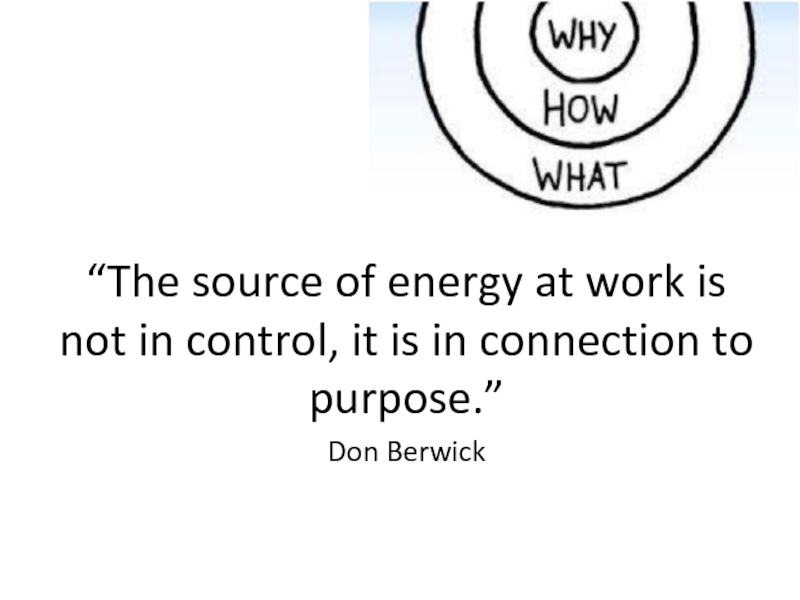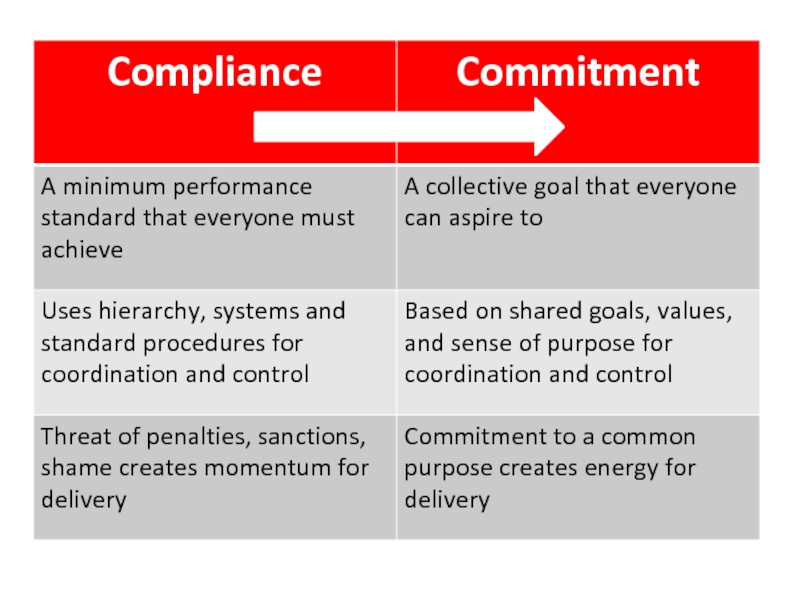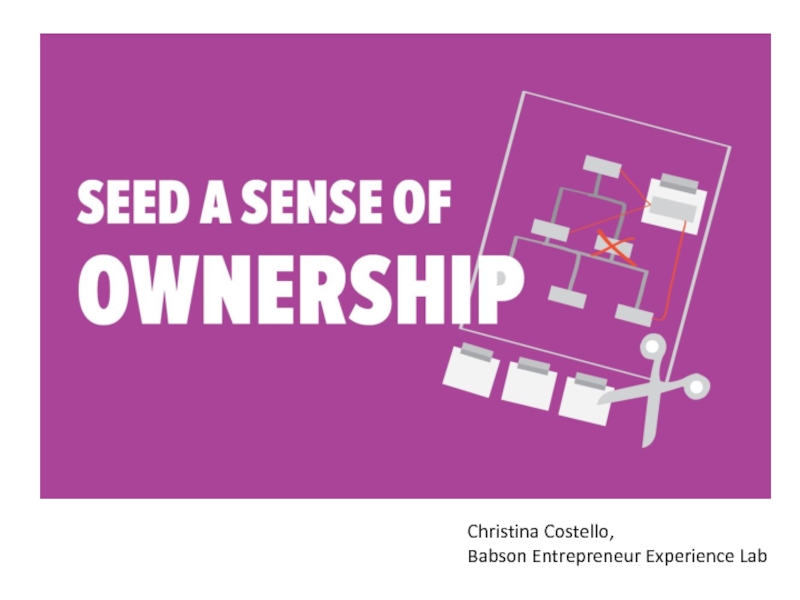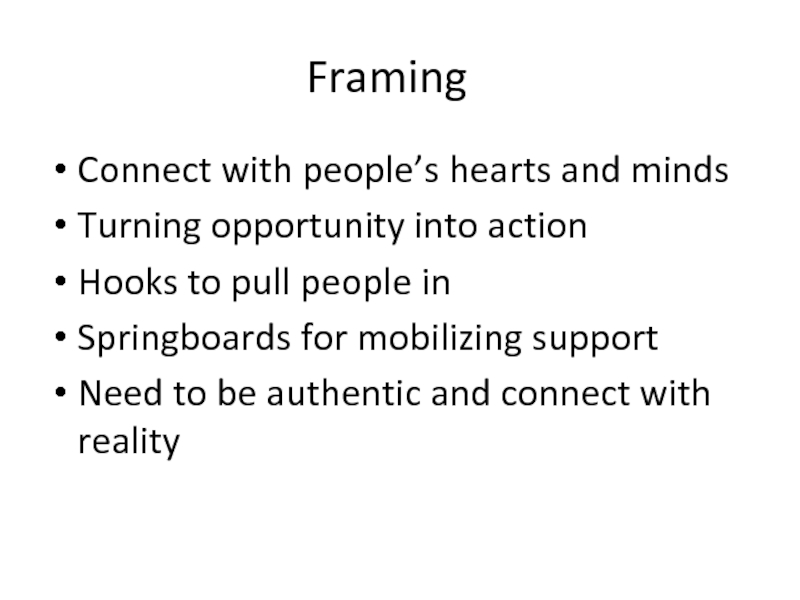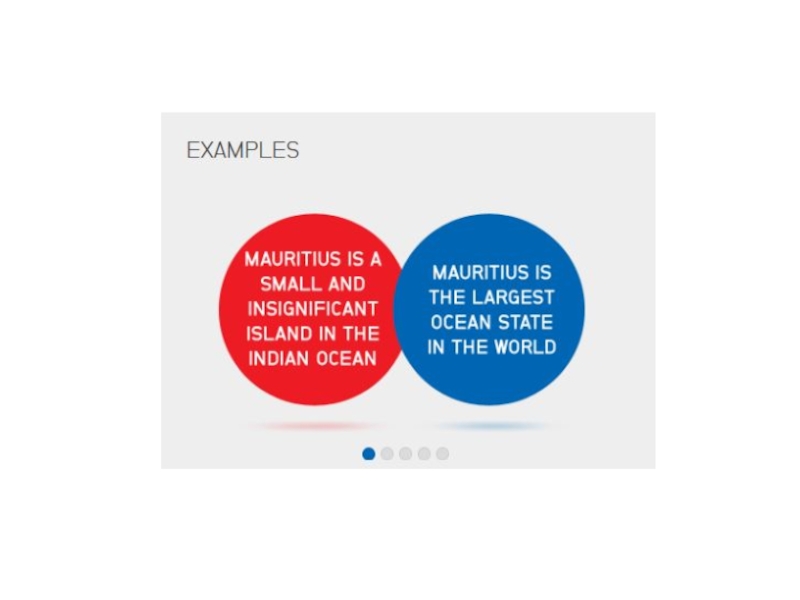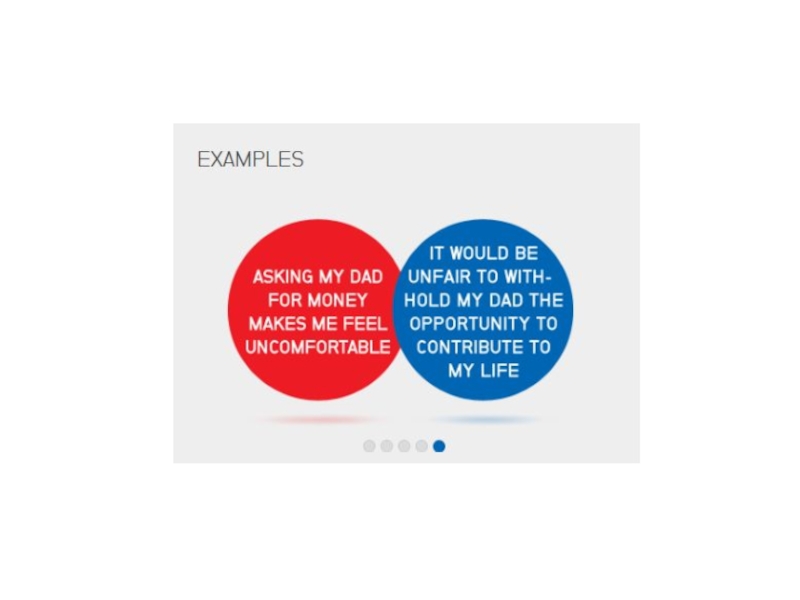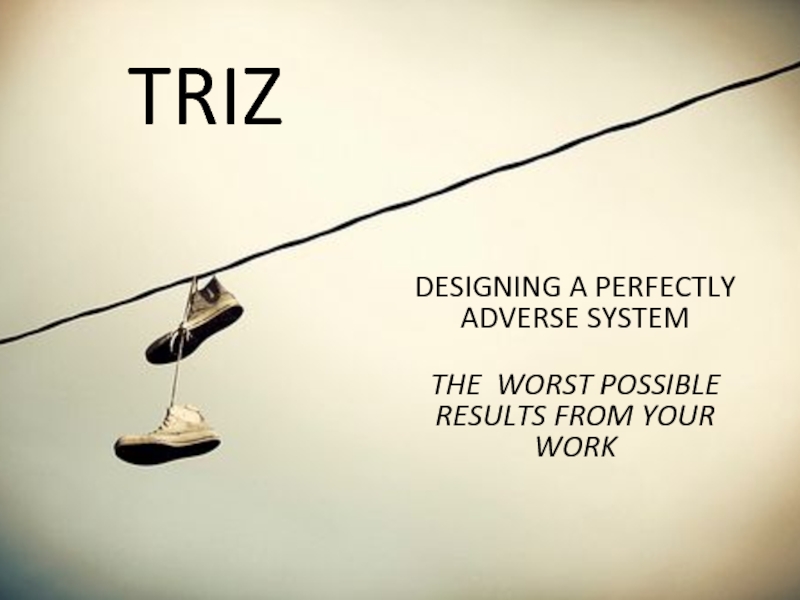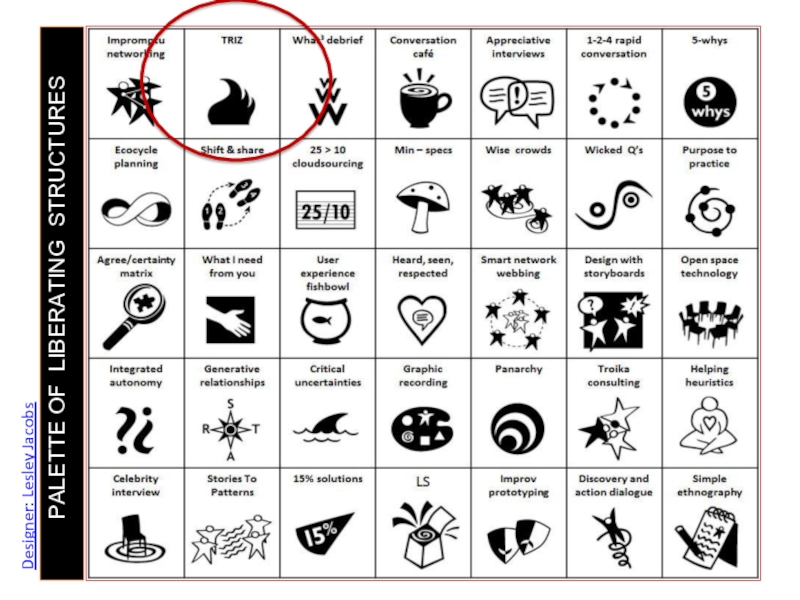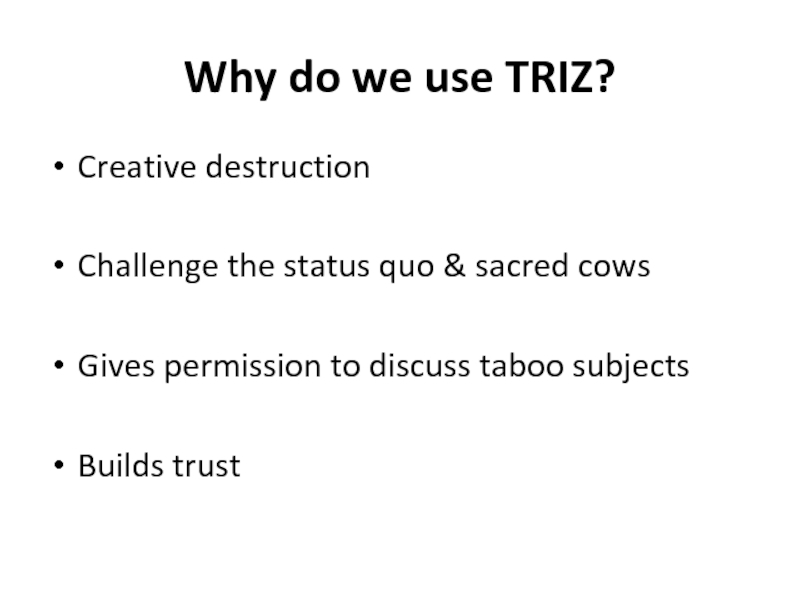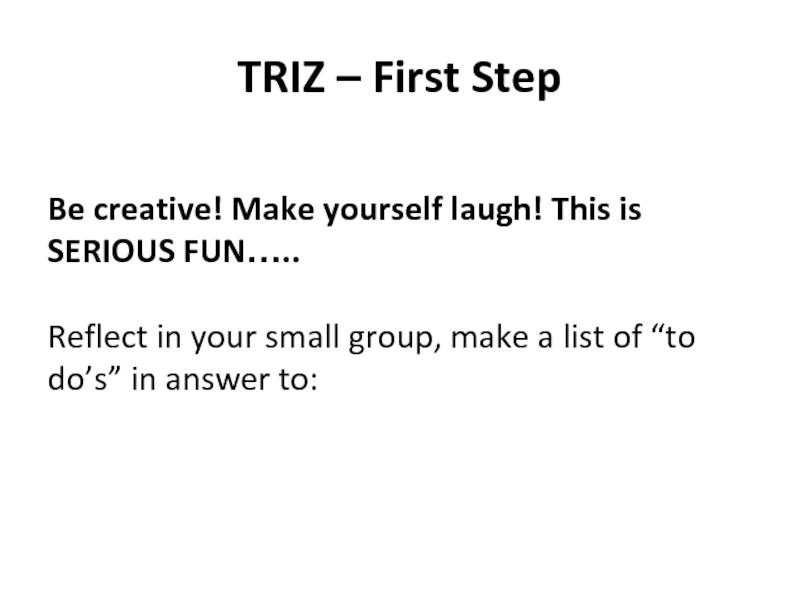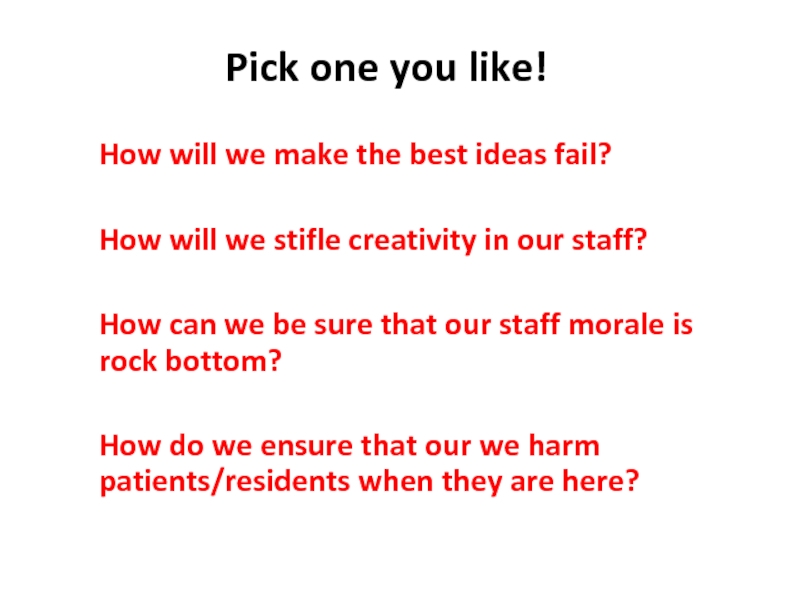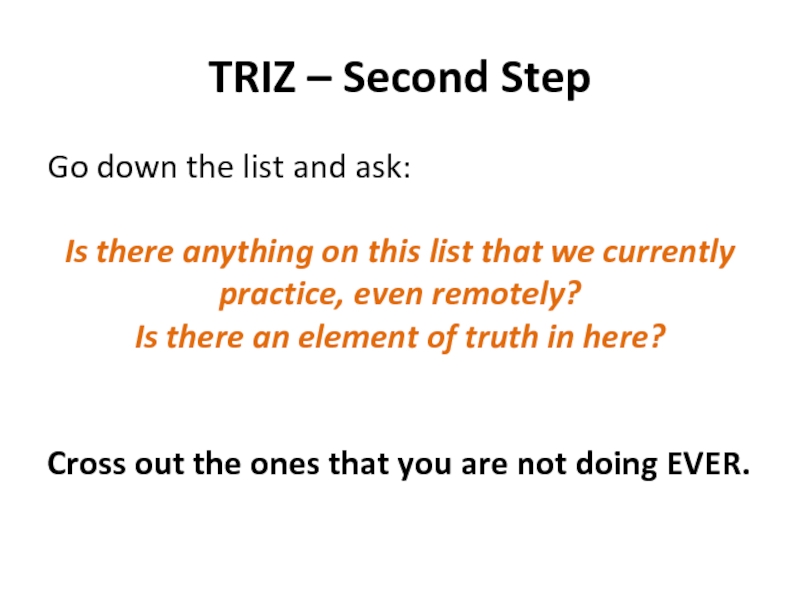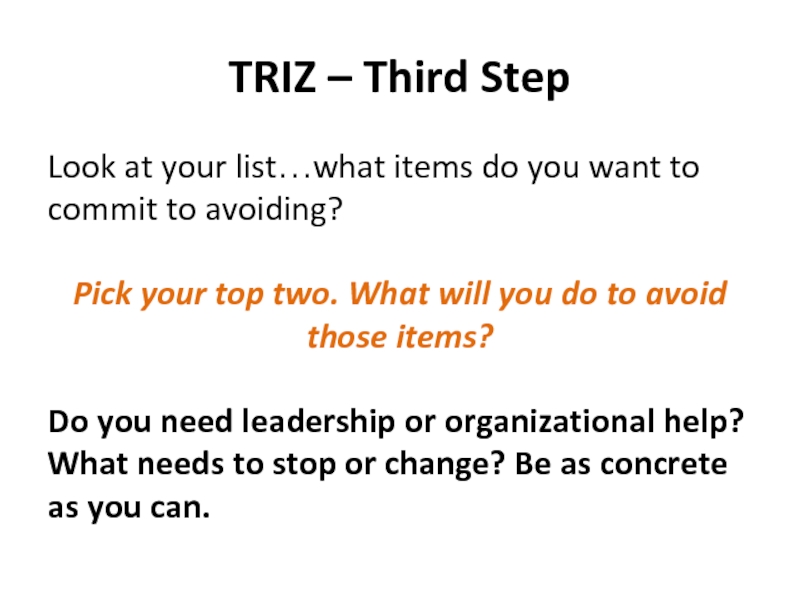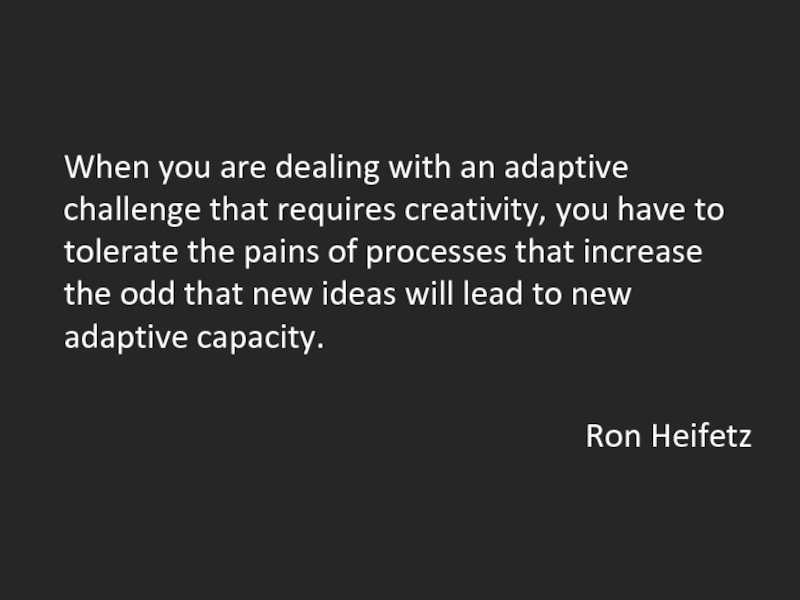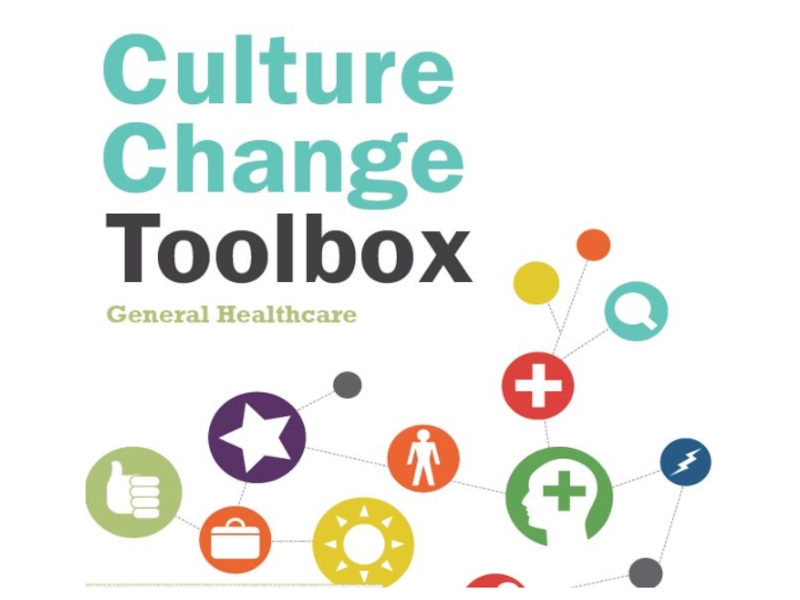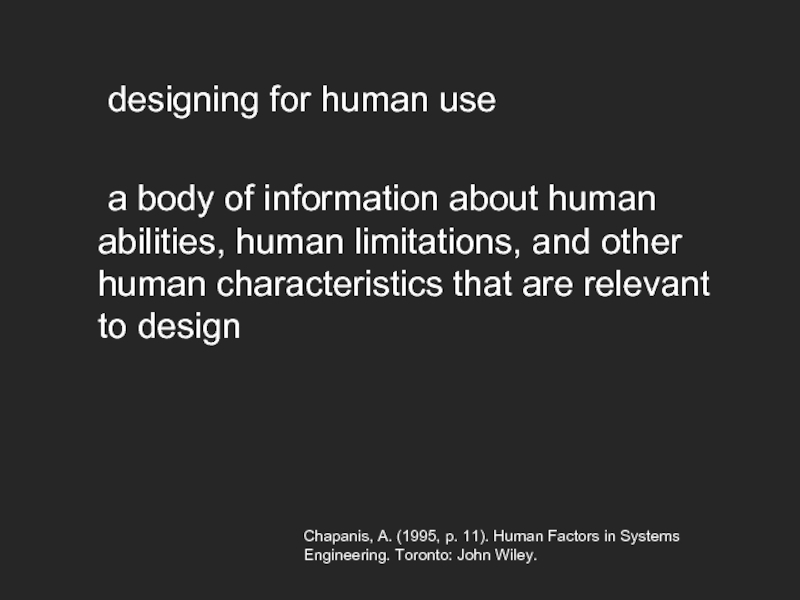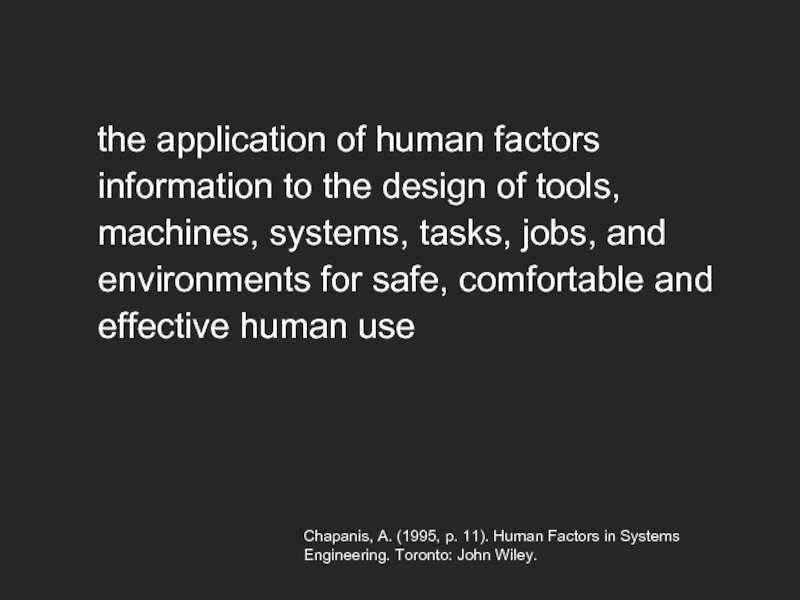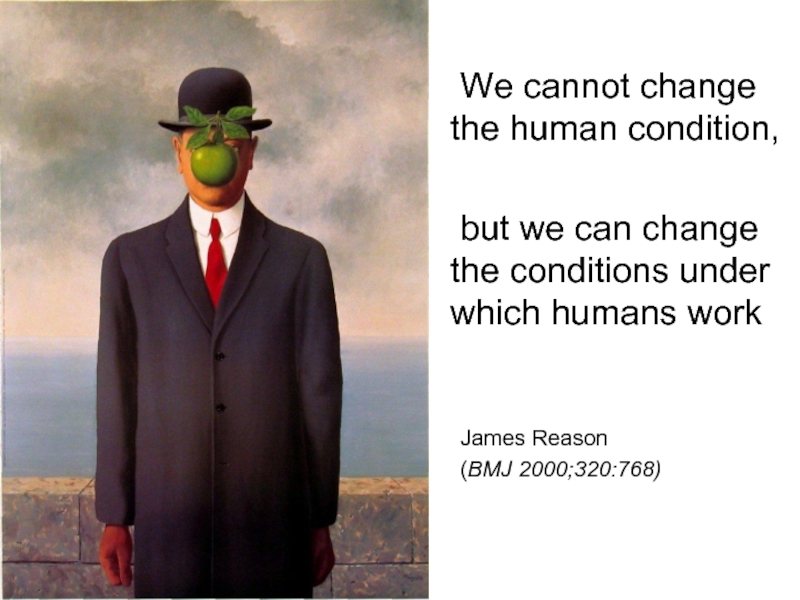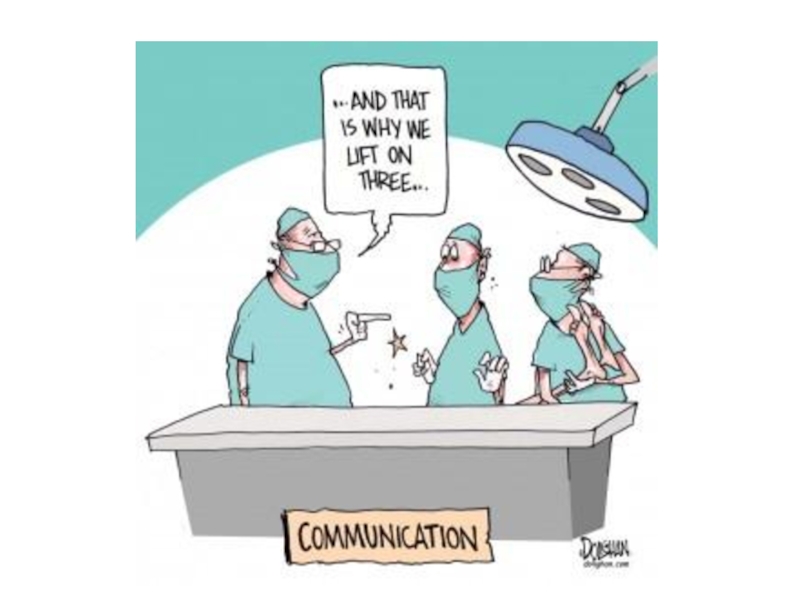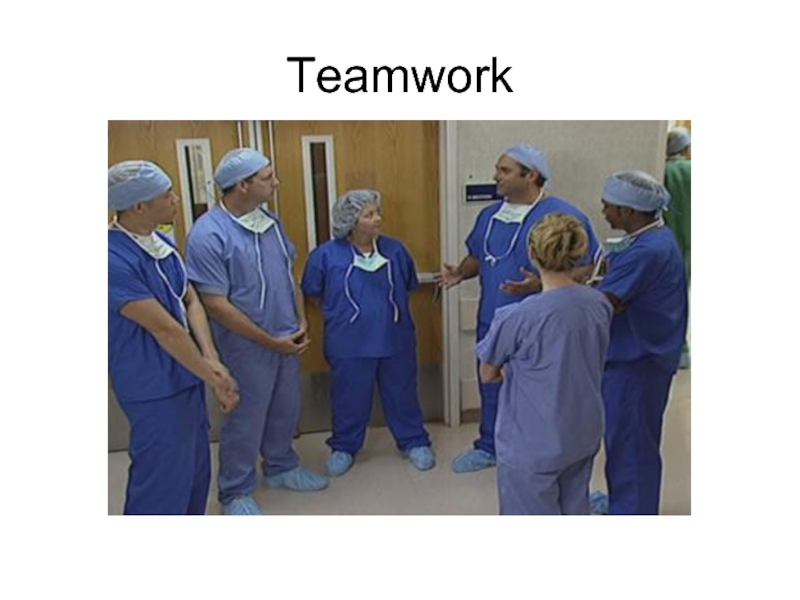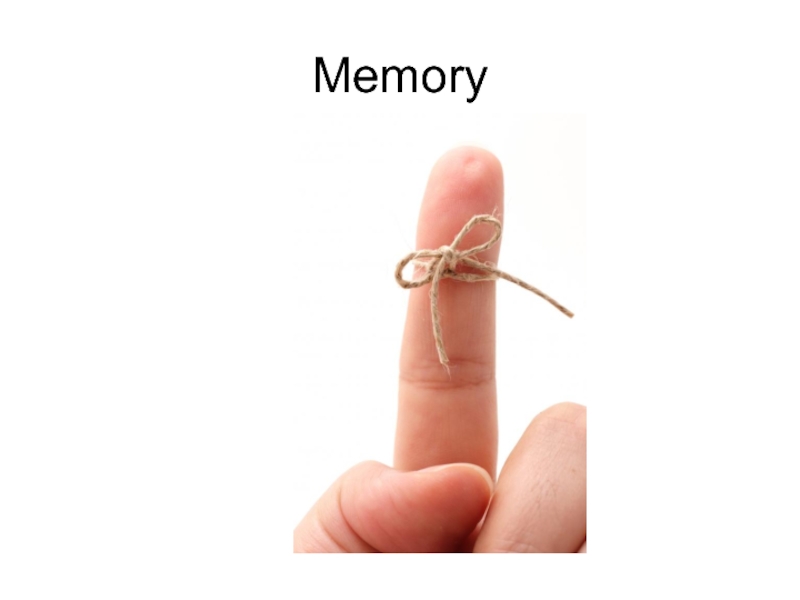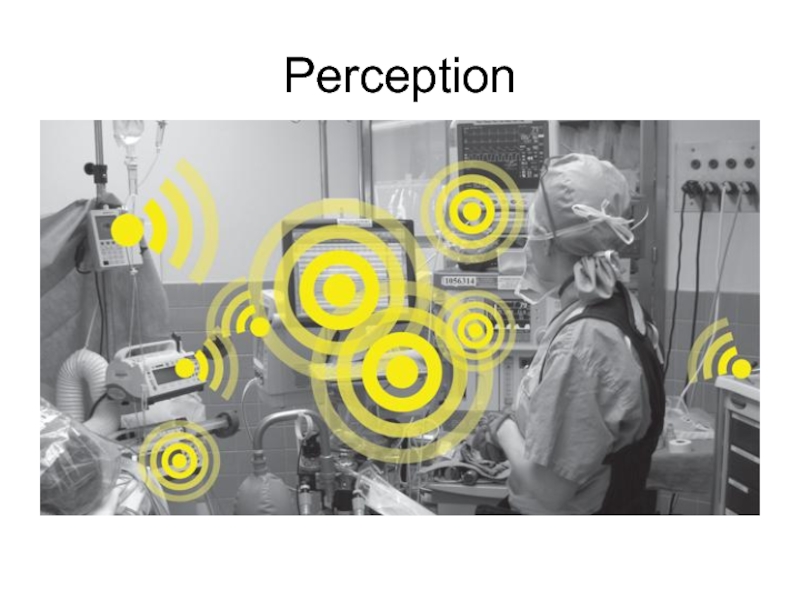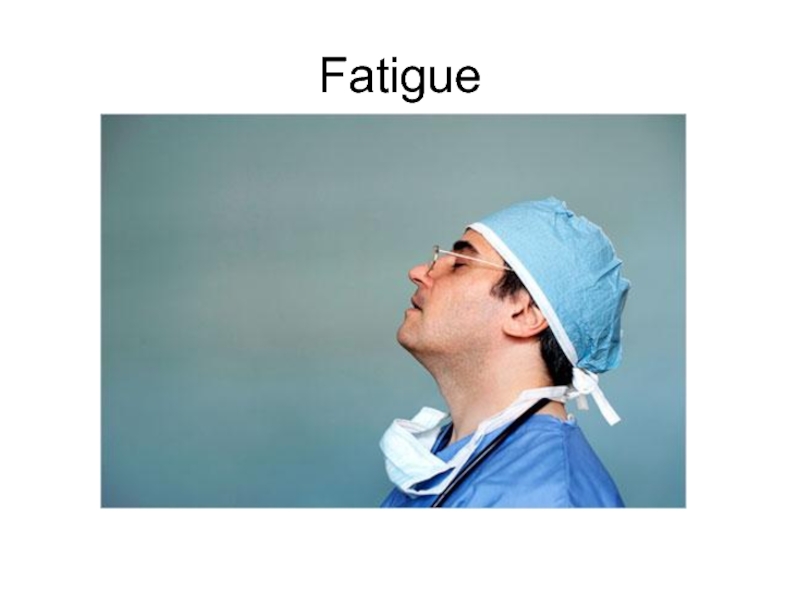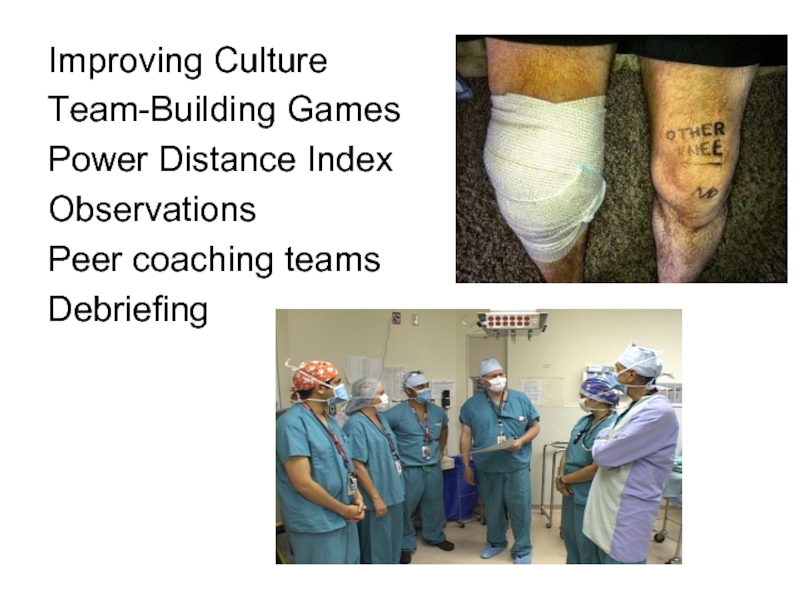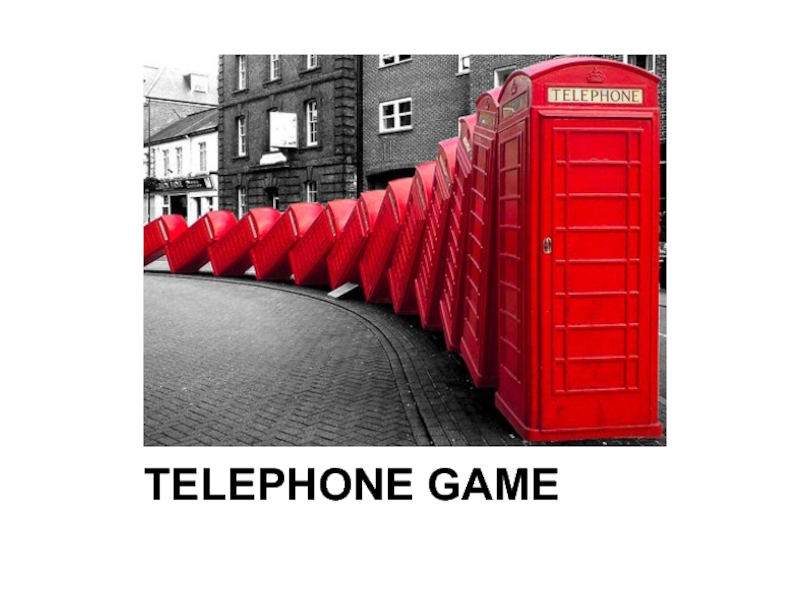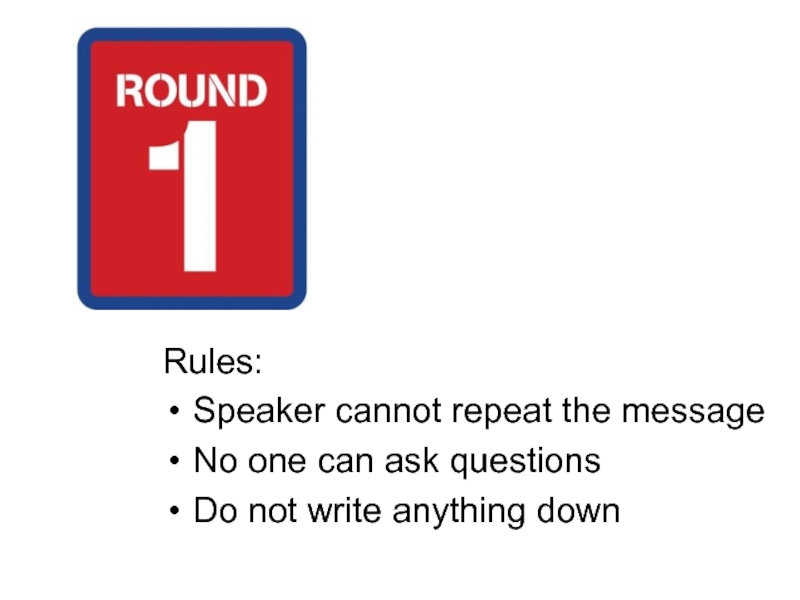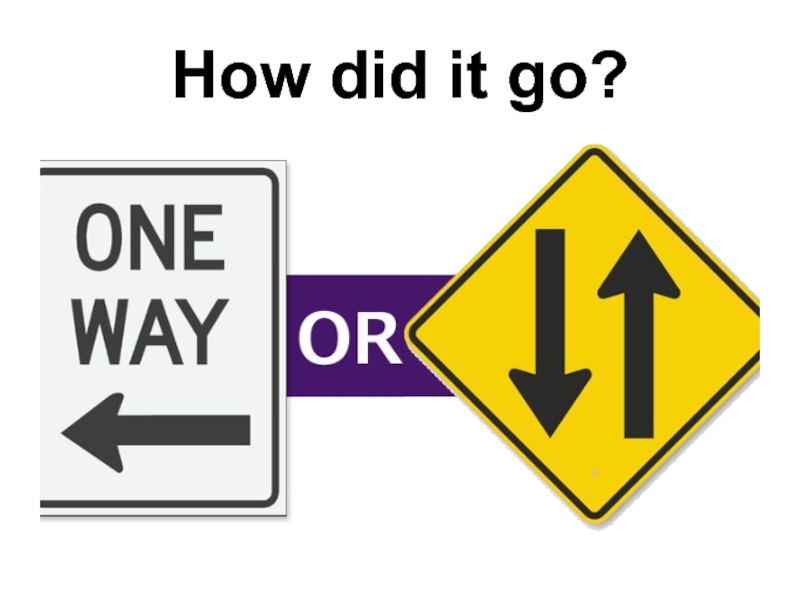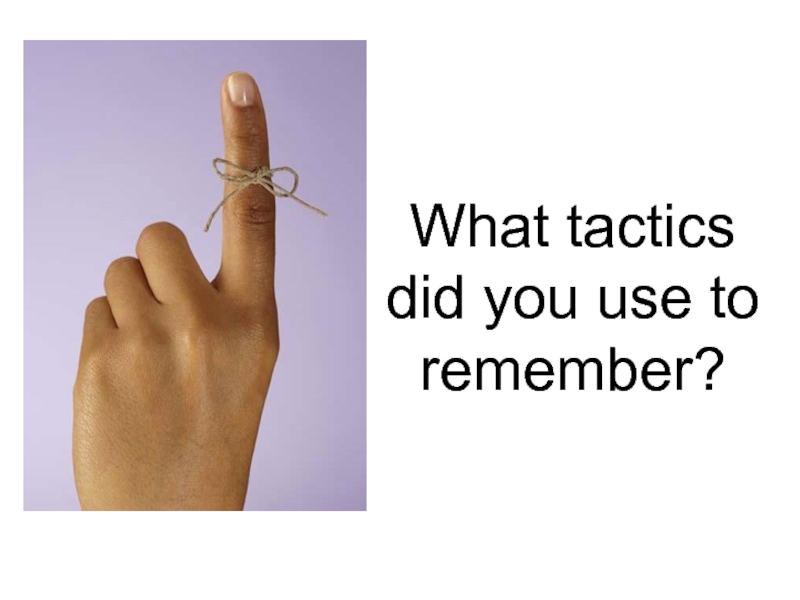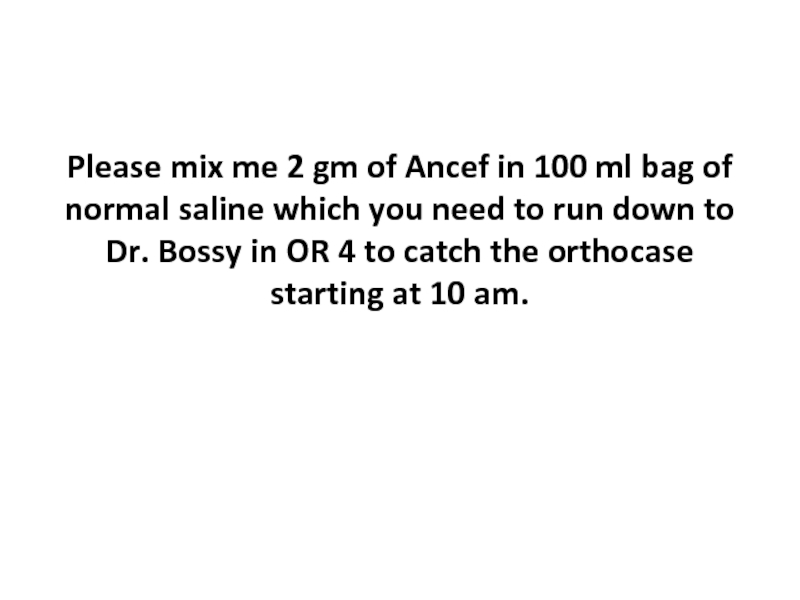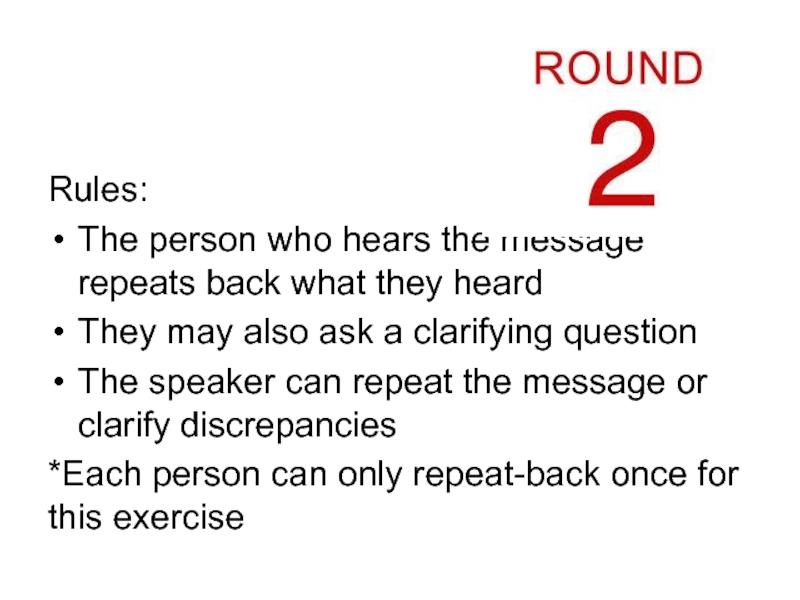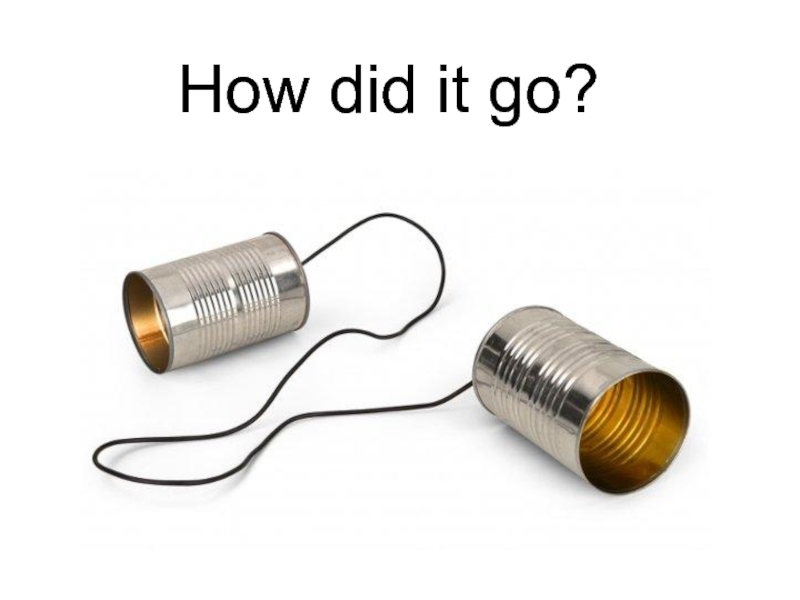- Главная
- Разное
- Дизайн
- Бизнес и предпринимательство
- Аналитика
- Образование
- Развлечения
- Красота и здоровье
- Финансы
- Государство
- Путешествия
- Спорт
- Недвижимость
- Армия
- Графика
- Культурология
- Еда и кулинария
- Лингвистика
- Английский язык
- Астрономия
- Алгебра
- Биология
- География
- Детские презентации
- Информатика
- История
- Литература
- Маркетинг
- Математика
- Медицина
- Менеджмент
- Музыка
- МХК
- Немецкий язык
- ОБЖ
- Обществознание
- Окружающий мир
- Педагогика
- Русский язык
- Технология
- Физика
- Философия
- Химия
- Шаблоны, картинки для презентаций
- Экология
- Экономика
- Юриспруденция
Identify Culture презентация
Содержание
- 1. Identify Culture
- 2. Improving Culture: Not as easy as it
- 3. Why culture? Silence Kills Study 90% of
- 4. HCAHPS 92 50 Medication Errors per Month
- 5. What are you seeing around culture issues? Poll Everywhere
- 7. Complex adaptive systems are composed of many
- 8. Three Core Elements Our System Structure
- 10. At present, prevailing strategies [in healthcare] rely
- 12. Self-Organization Self-organization is a process whereby
- 13. Interdependencies Overarching term for relationships, connections, and
- 14. Sense Making
- 15. So now what? How do we lead
- 16. So now what? How do we lead
- 17. Adaptive in leadership style Ask more questions
- 18. Stay close to those who oppose your
- 19. TECHNICAL CULTURE/ ADAPTIVE
- 20. Ron Heifetz, The Practice of Adaptive
- 21. Example Reducing Urinary Tract Infections on my unit
- 22. “the most common cause of failure in
- 24. Culture eats strategy for lunch!
- 25. “The source of energy at work is
- 27. Christina Costello, Babson Entrepreneur Experience Lab
- 28. “I have a dream” “I have some new clinical guidelines for you….”
- 29. Framing Connect with people’s hearts and minds
- 33. TRIZ DESIGNING A PERFECTLY ADVERSE SYSTEM
- 34. Lipmanowicz, McCandless PALETTE OF LIBERATING STRUCTURES Designer: Lesley Jacobs
- 35. Why do we use TRIZ? Creative destruction
- 36. TRIZ – First Step Be creative!
- 37. How will we make the best ideas
- 38. TRIZ – Second Step Go down the
- 39. TRIZ – Third Step Look at your
- 40. When you are dealing with an adaptive
- 41. Teamwork and Communication “Ins and Outs” Allison
- 42. The Culture Toolkit
- 45. What is Human Factors?
- 46. designing for human use a body
- 47. the application of human factors
- 50. We cannot change the human condition,
- 52. Teamwork
- 53. Memory
- 54. Perception
- 55. Fatigue
- 56. Attention
- 57. Improving Culture Team-Building Games Power Distance Index Observations Peer coaching teams Debriefing
- 58. TELEPHONE GAME
- 59. Rules: Speaker cannot repeat the message No
- 60. How did it go?
- 61. What tactics did you use to remember?
- 62. Please mix me 2 gm of Ancef
- 63. Rules: The person who hears the message
- 64. How did it go?
- 65. How was your memory during Round 2?
- 66. Mrs. Johnston needs to have her antipsychotics
- 67. Critical Language A phrase that is
- 69. GP: I’m concerned about how sick your
- 70. Power Distance Index
- 71. “Power distance is the extent to which
- 72. High Power Distance Index Cultures Authority and
- 73. http://www.reply-mc.com/2011/12/27/unraveling-social-interaction-part-4/
- 74. Can hierarchy cause plane crashes?
- 75. “Korean Air had more plane crashes than
- 76. Canada Power Distance Index
- 77. Canada Canadian culture is marked by interdependence
- 78. What do you see in a high
- 79. Questions to ask yourself? Are you aware
- 80. Situational Leaders
- 81. Let’s Talk Culture! How can you create experimentation?
- 82. “best failure” ritual Who is brave enough
- 83. Coaching
- 84. Coaching
- 85. Communication Approaches Command Team Obligation Statement Team
- 86. Example A patient has been prepped and
- 87. Slide courtesy of Ron Collins, 2014
- 88. Communication Approaches Command Team Obligation Statement Team
- 89. Hint
- 90. Hint Is intended to be very general.
- 91. Preference
- 92. Preference A weakly stated request that recognizes
- 93. Query
- 94. Query A query is a question to
- 95. Team Suggestion
- 96. Team Suggestion Elevates the personal statement of
- 97. Team Obligation Statement
- 98. Team Obligation Statement A team obligation statement
- 99. Command
- 100. Command A command is the highest form
- 101. Slide courtesy of Ron Collins, 2014
- 102. BCPSQC Menu of Support
- 103. Contact Marlies van Dijk mvandijk@bcpsqc.ca Allison Muniak amuniak@bcpsqc.ca
Слайд 1Identify Culture
Communication
Behavior
Rituals
Tolerance
From Dr. Scott Ellner, St Francis Hospital & Medical Center,
Слайд 2Improving Culture:
Not as easy as it appears
Culture: How is it relevant
What is current state
TRIZ: a way to get the front line engaged
Teamwork and Communication “Ins and Outs”
How can you apply some of these tools?
Слайд 3Why culture?
Silence Kills Study
90% of JAHCO never events linked to communication
17
Reviews of academic literature conclude correlation between culture & outcomes
1. Disease-Specific Care Certification – National Patient Safety Goals. Oak Brook Terrace (IL): The Joint Commission; 2008. Available from: www.jointcommision.org.
Слайд 4HCAHPS
92
50
Medication Errors per Month
2.0
6.1
Days between C Diff Infections
121
40
Days between Stage 3
52
18
Illustrative Data:
Extracted from
Blinded Client Data
Слайд 7Complex adaptive systems are composed of many interdependent, heterogeneous parts that
Unpredictable
(Camazine, 2001; Kauffman, 1995; Allen & Varga, 2006)
Слайд 10At present, prevailing strategies [in healthcare] rely largely on outmoded theories
Слайд 12Self-Organization
Self-organization is a process whereby local interactions give rise to patterns
ADAPTIVE – RESILIENT – UNCERTAIN
(and difficult to manage)
H.J. Lanham et al., How complexity science can inform scale-up and spread in health care:
Understanding the role of self-organization in variation across local contexts. Social Science & Medicine (2012)
Слайд 13Interdependencies Overarching term for relationships, connections, and interactions among parts of a
Pre-Intervention
Post-Intervention
Lindberg, C., & Clancy, T. R. (2010). Journal of Nursing Administration
Слайд 15So now what?
How do we lead in a complex system…
Acknowledge Unpredictability
Allow
Emphasize discovery in each intervention setting
Recognize Self-Organization
Develop “good enough”
Facilitate sense-making
H.J. Lanham et al., How complexity science can inform scale-up and spread in health care:
Understanding the role of self-organization in variation across local contexts. Social Science & Medicine (2012)
Слайд 16So now what?
How do we lead in a complex system…
Facilitate Interdependencies
Reinforce
Encourage sense-making
Encourage Experimentation
Encourage participants to ask questions, admit ignorance and deal with paradox
Seek out different points of view
H.J. Lanham et al., How complexity science can inform scale-up and spread in health care:
Understanding the role of self-organization in variation across local contexts. Social Science & Medicine (2012)
Слайд 17Adaptive in leadership style
Ask more questions rather than issuing more directives
Build
Expand the circle of individuals who need to be consulted in exploring possible solutions to the problem
Ron Heifetz
Слайд 18Stay close to those who oppose your ideas; spend time with
Ron Heifetz
Слайд 20
Ron Heifetz, The Practice of Adaptive Leadership
2009
Distinguishing technical problems
and
Слайд 22“the most common cause of failure in leadership is produced by
Ron Heifetz
Слайд 25“The source of energy at work is not in control, it
Don Berwick
Слайд 29Framing
Connect with people’s hearts and minds
Turning opportunity into action
Hooks to pull
Springboards for mobilizing support
Need to be authentic and connect with reality
Слайд 35Why do we use TRIZ?
Creative destruction
Challenge the status quo & sacred
Gives permission to discuss taboo subjects
Builds trust
Слайд 36TRIZ – First Step
Be creative! Make yourself laugh! This is SERIOUS
Reflect in your small group, make a list of “to do’s” in answer to:
Слайд 37How will we make the best ideas fail?
How will we stifle
How can we be sure that our staff morale is rock bottom?
How do we ensure that our we harm patients/residents when they are here?
Pick one you like!
Слайд 38TRIZ – Second Step
Go down the list and ask:
Is there anything
Is there an element of truth in here?
Cross out the ones that you are not doing EVER.
Слайд 39TRIZ – Third Step
Look at your list…what items do you want
Pick your top two. What will you do to avoid those items?
Do you need leadership or organizational help?
What needs to stop or change? Be as concrete as you can.
Слайд 40When you are dealing with an adaptive challenge that requires creativity,
Ron Heifetz
Слайд 41Teamwork and Communication “Ins and Outs”
Allison Muniak, M.A.Sc
Human Factors Specialist
BC Patient
Слайд 46 designing for human use
a body of information about human abilities, human
Chapanis, A. (1995, p. 11). Human Factors in Systems Engineering. Toronto: John Wiley.
Слайд 47 the application of human factors information to the design
Chapanis, A. (1995, p. 11). Human Factors in Systems Engineering. Toronto: John Wiley.
Слайд 50 We cannot change the human condition,
but we can change the
James Reason
(BMJ 2000;320:768)
Слайд 57Improving Culture
Team-Building Games
Power Distance Index
Observations
Peer coaching teams
Debriefing
Слайд 62Please mix me 2 gm of Ancef in 100 ml bag
Слайд 63Rules:
The person who hears the message repeats back what they heard
They
The speaker can repeat the message or clarify discrepancies
*Each person can only repeat-back once for this exercise
Слайд 66Mrs. Johnston needs to have her antipsychotics reduced as I think
Слайд 67Critical Language
A phrase that is commonly understood to imply “stop
Example: I need clarity
Слайд 69GP: I’m concerned about how sick your mother is. Her breathing
Daughter: It’s just me looking after her and it’s getting tougher and tougher doing this all by myself.
GP: It sounds like this is becoming more of a problem and I’m getting uncomfortable with having this load on you at home.
Daughter: I’m just about at the end of my rope, I don’t think that I can look after her anymore.
GP: I think that we will have to stop what we are doing and get you some help caring for her.
Daughter: I found her on the floor this morning and hurt my back getting her back into bed by myself.
GP: This is becoming a safety issue for both you and your mom. We can get some home care to help with her medication and personal care and give you a break until she gets better.
Слайд 71 “Power distance is the extent to which less powerful members of
A high power distance score accepts a hierarchical order in which everyone has a place that needs no further justification.
The higher the power distance in a culture, the less likely those in subordinate roles will question the actions or directions of individuals in authority.
Geert Hofstede’s Power Distance Index
www.Clearlycultural.com
Слайд 72High Power Distance Index Cultures
Authority and demonstrate rank.
Subordinates expect clear guidance
Subordinates are expected to take the blame for things going wrong (Collateral damage).
The relationship between boss and subordinate is rarely close or personal.
Class divisions within society are accepted.
Slide courtesy of Ron Collins, 2014
Слайд 75 “Korean Air had more plane crashes than almost any other airline
But Boeing and Airbus design modern, complex airplanes to be flown by two equals. That works beautifully in low-power-distance cultures [like the U.S., where hierarchies aren't as relevant]. But in cultures that have high power distance, it’s very difficult.”
Malcome Gladwell,
Outliers – The Story of Success
Слайд 77Canada
Canadian culture is marked by interdependence and value placed on egalitarianism.
Lack of overt status and/or class distinctions in society.
Hierarchy in Canadian organisations is established for convenience.
Superiors are always accessible and managers rely on individual employees and teams for their expertise.
Managers and staff members consult one another and share information freely.
With respect to communication, value a straightforward exchange of information.
Power Distance Index
Score = 39
Слайд 78What do you see in a high power distance index?
Senior-level people
Senior leaders perceive that everything is going well
Junior-level people do not bring ideas forward.
It’s hard to innovate under these conditions.
Geert Hofstede
http://geert-hofstede.com
Слайд 79Questions to ask yourself?
Are you aware of how others react to
Do they start or stop talking when you enter the room?
Do you feel you can not talk to higher levels in the organization without permission.
Does your organization encourage the use of titles and position
Слайд 82“best failure” ritual
Who is brave enough to share your biggest bomb
Focus on what you’ve learned most from a mistake
Слайд 85Communication Approaches
Command
Team Obligation Statement
Team Suggestion
Query
Preference
Hint
Slide courtesy of Ron Collins, 2014
Слайд 86Example
A patient has been prepped and draped, and as the surgeon
This nurse must now assume the role of situational leader; her role is to raise the situational awareness of the entire operating team.
The question is this: “What does she say?”
Slide courtesy of Ron Collins, 2014
Слайд 88Communication Approaches
Command
Team Obligation Statement
Team Suggestion
Query
Preference
Hint
Slide courtesy of Ron Collins, 2014
Слайд 90Hint
Is intended to be very general. A hint does not have
For example: “It would be nice to get through the day without making any mistakes.”
Слайд 92Preference
A weakly stated request that recognizes that several options exist. The
For example: “I wish I was in another OR right now!”
Слайд 94Query
A query is a question to draw other’s attention to a
For example: “Is that the correct X-Ray?”
Слайд 96Team Suggestion
Elevates the personal statement of one member of the team
For example: “Can we check the X-Ray please?”
Слайд 98Team Obligation Statement
A team obligation statement is a strong call to
For example: “Before we go any further, we need to verify which side this patient has consented to.”
Слайд 100Command
A command is the highest form of one member of a
For example: “Stop! We are about to make a mistake that will harm this patient
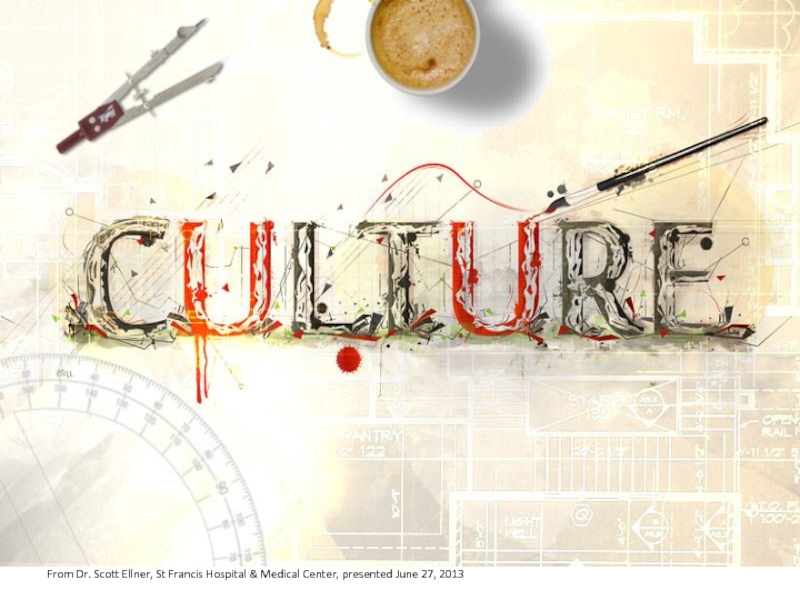
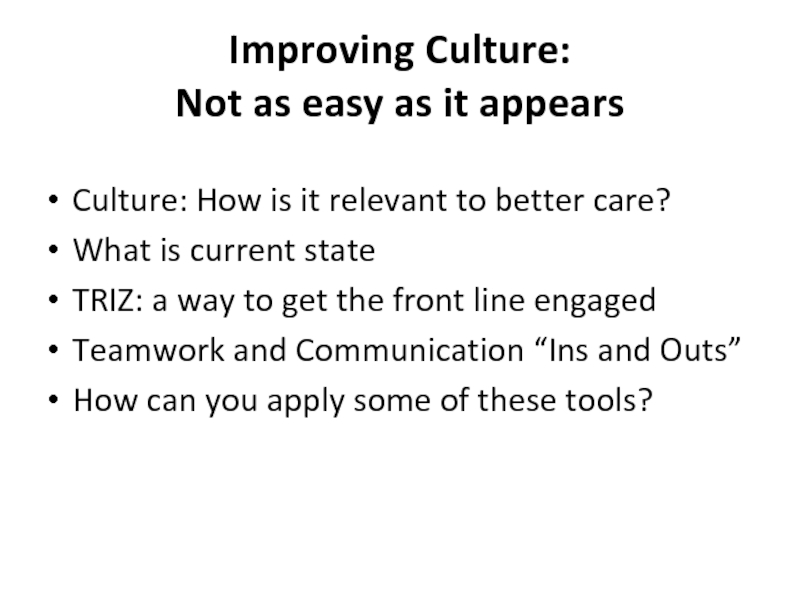
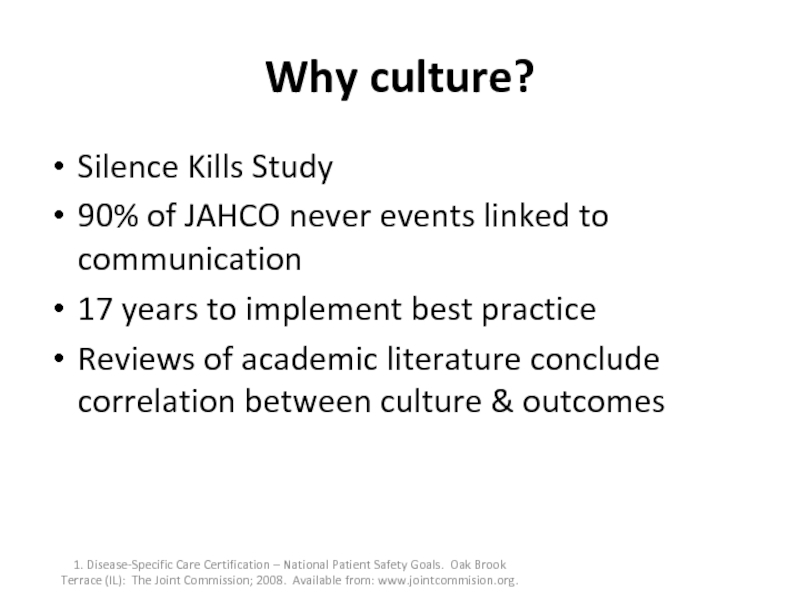
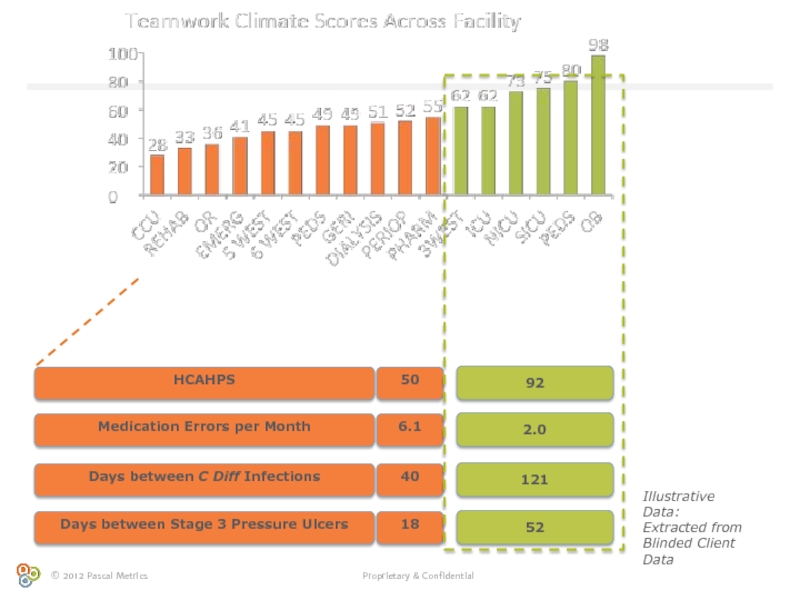
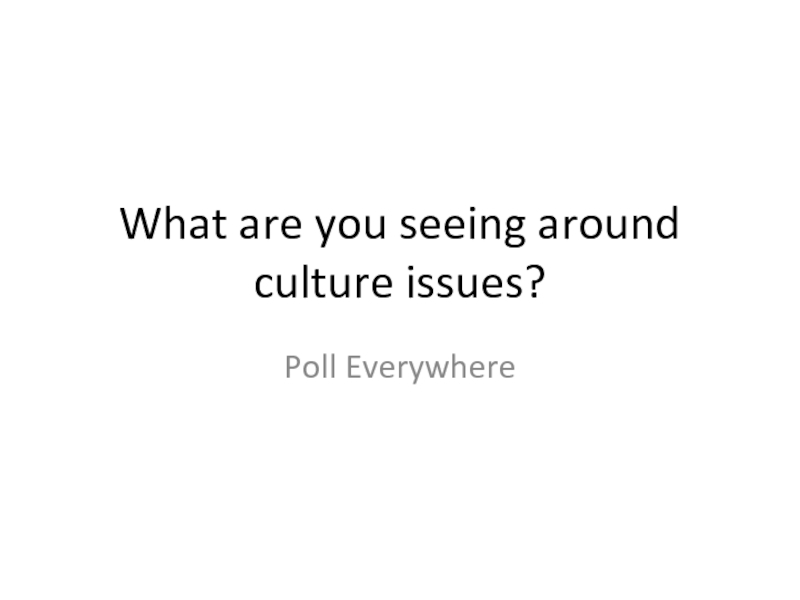
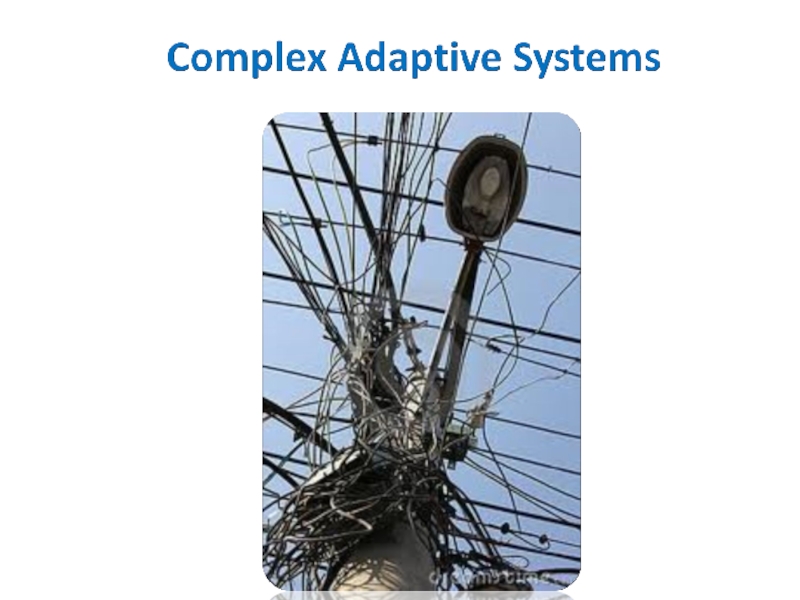
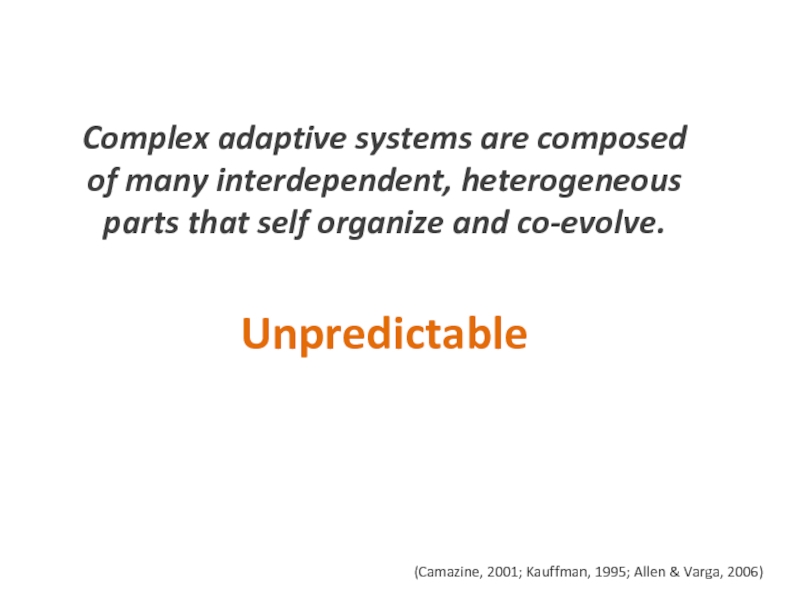

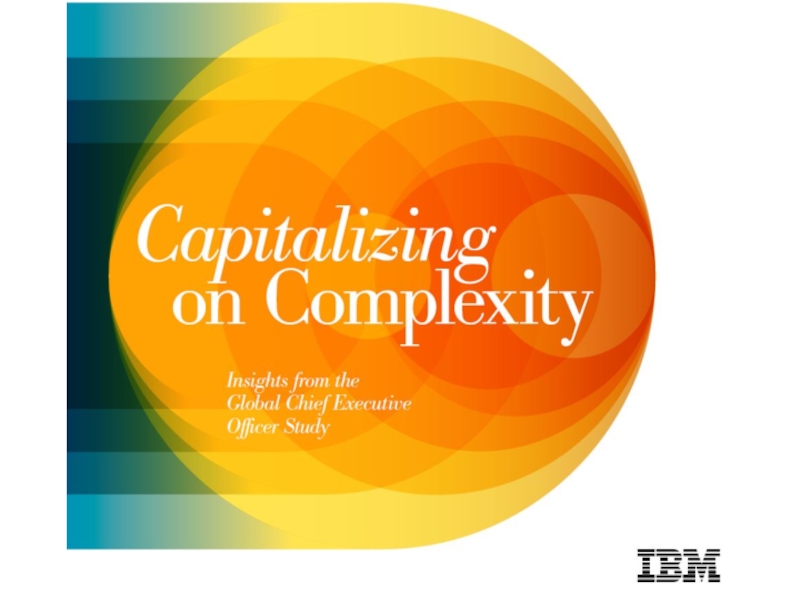
![At present, prevailing strategies [in healthcare] rely largely on outmoded theories of control and standardisation](/img/tmb/2/107659/e0ae3f785adf67343e00d796d1915e87-800x.jpg)
